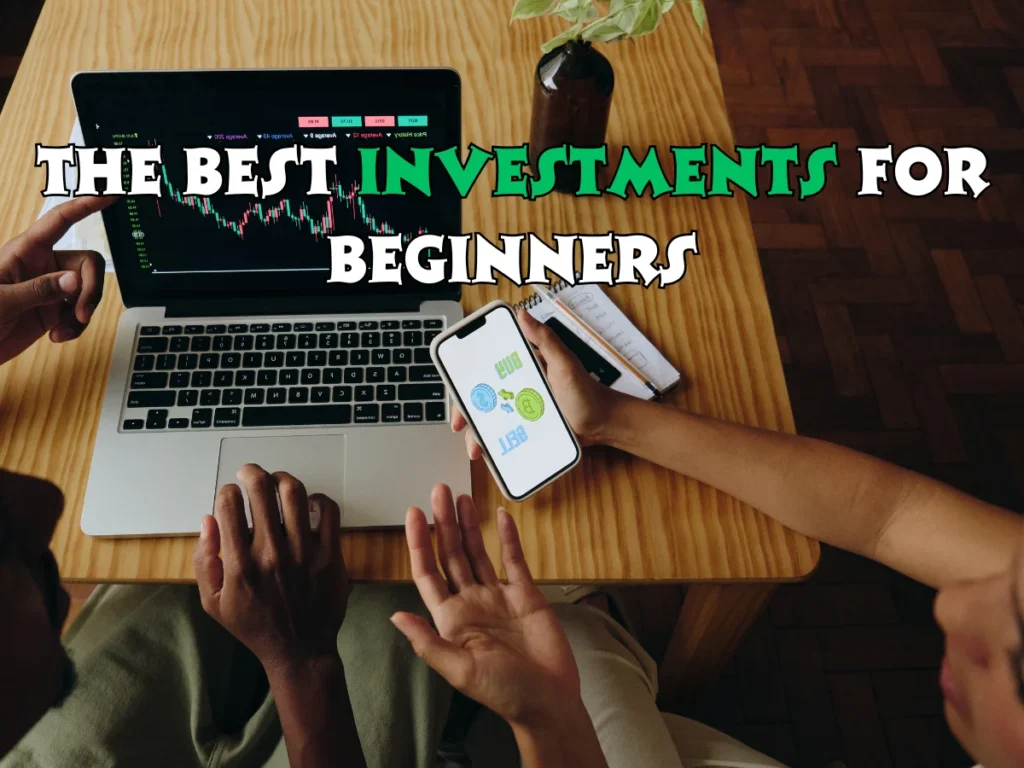When I first heard the word “investing,” I thought it was something only rich people did. You know, people in suits watching stock charts all day. I didn’t think it was for someone like me — someone with a small paycheck, rent to cover, and just a few bucks left over at the end of the month.
But then I learned that investing doesn’t have to be scary, and it doesn’t have to cost a fortune. You can start small. Really small. Like $5-small. And the earlier you begin, the better.
So I decided to try. I made mistakes, I learned as I went, and now I feel way more confident about my money. If you’re just getting started and wondering where to begin, let me walk you through what worked for me. These are the best investments for beginners, especially if you’re new, broke, or both — like I was.
Table of Contents
1. High-Yield Savings Account: My Safe Starting Point

The very first thing I did was open a high-yield savings account. I didn’t even know what that meant until I read about it online.
Basically, it’s a savings account that pays you more interest than a regular one. Some banks pay you 3% or more, while your regular bank might only give you 0.01%. That means if you leave $1,000 in there, you’ll earn way more over time — and it’s totally risk-free.
I picked an online bank because they usually offer the highest rates. I used this account to build my emergency fund — a small stash of cash for “just in case” moments like car repairs or a surprise bill. No stock market involved. No stress.
I liked that I could see the interest grow every month. It wasn’t a lot, but it was something. It felt like free money just for saving, and that kept me motivated.
2. Index Funds: My Favorite “Set It and Forget It” Investment
After I saved a little money, I wanted to try investing. That’s when I discovered index funds.
An index fund is basically a basket of different companies you can invest in all at once. Instead of choosing one stock (which can be risky), you own little pieces of hundreds of companies. The most famous one is the S&P 500, which includes 500 big U.S. companies.
Why did I love it? Because it was easy. I didn’t need to study companies or guess which stock would go up. I just invested in the whole market. If the market did well, so did I.
I used an app that allowed fractional shares, so I didn’t need to come up with hundreds of dollars. Even with just $20, I was able to get started. And over time, it grew.
I didn’t check it every day. I just added a little money each month and let it do its thing. It was one of the smartest choices I made.
3. ETFs: Like Index Funds, But More Flexible
After a few months with index funds, I heard about ETFs — exchange-traded funds.
They’re super similar to index funds. They also hold a bunch of companies in one bundle. The main difference? You can buy and sell ETFs like a stock during the day. Index funds usually trade only once per day.
I liked ETFs because they were easy to access through my investment app, and I could start with just a few dollars.
One of my favorites was a total stock market ETF. That means it included a mix of big and small companies, so I was spreading out my money even more. It felt safe but still had the chance to grow.
If index funds are like a slow cooker (you set it and walk away), ETFs are like a microwave — a little more hands-on, but still super simple.
4. Micro-Investing Apps: Great for Beginners Like Me
When I felt unsure about investing, I tried something called micro-investing apps. These apps are perfect if you don’t have a lot of money or knowledge.
The one I used rounded up my purchases. So if I bought something for $2.50, the app would round it up to $3.00 and invest the extra $0.50. It was automatic, and I barely noticed the money was gone.
After a few months, I had almost $50 invested — without even trying. And that $50 started growing.
It made me realize that small amounts add up. Even if you only have spare change, you can still invest and watch it grow over time.
5. CDs (Certificates of Deposit): Good for Short-Term Goals
Later on, I learned about something called a CD, or certificate of deposit.
It’s kind of like a savings account, but you agree to leave your money there for a certain period — like 6 months or 1 year. In return, the bank gives you higher interest.
I used a CD when I was saving up for a new laptop. I didn’t want to accidentally spend the money, and I wanted it to grow a bit while I waited.
CDs are a good option if you want zero risk and don’t mind waiting a bit before using the money.
6. Yourself: The Best Long-Term Investment
One thing I didn’t understand at first was that investing doesn’t always mean putting money in the stock market. Sometimes, the best investment is yourself.
For example, I spent money on:
- A personal finance book
- A course on budgeting
- A few online classes about digital skills
These helped me get better with money and even find a better job. They didn’t give me a financial return right away, but they changed the way I thought about money.
That change? Priceless.
Just Start Somewhere
When I began, I didn’t know anything about investing. I didn’t have much money, either. But I started small. I used simple tools, stuck with beginner-friendly options, and kept learning a little at a time.
Now I look back and I’m so glad I started — even if it was just with $10.
If you’re new to investing, don’t stress. You don’t need to know everything. You just need to take one small step. Whether that’s opening a high-yield savings account or investing $5 in an ETF, you’re moving forward.
That’s what matters most.
Check this out:
How to Launch a Cleaning Business and Earn £500,000 Annually
Starting a Vending Machine Side Hustle: Steps to Achieve $900 Monthly Income
A Guide to Profitable Reselling Businesses: From Zero to $20,000 a Month
